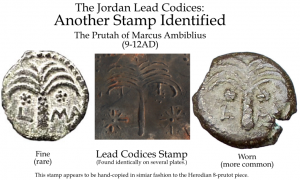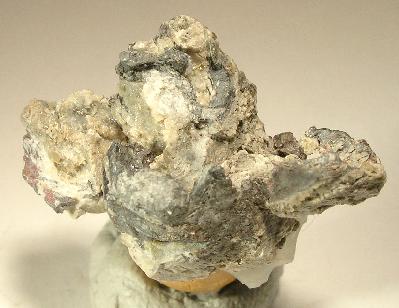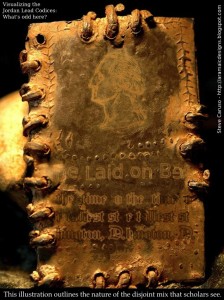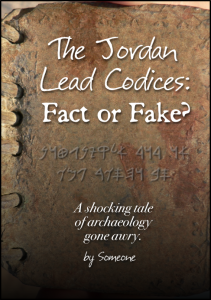So you may be aware about how the informal group of Bibliobloggers who are putting the Jordan Codices and surrounding circumstances under the microscope recently uncovered that one of the metallurgical reports was tampered with on the Jordan Codices Facebook page. (For background, see Tom Verenna’s video and Dan McClellan’s post about the debacle thusfar.)
In this post, I’d like to go over what was originally stated in parts of that report with some ambiguous language clarified by the researcher who wrote it, Dr. Peter Northover, himself (of whom I am deeply grateful for taking his time to correspond with me).
When I first contacted Dr. Northover (whose late first wife, I found out, was Alison Northover, a highly respected librarian whose legacy for professional development is held today in memory by a prestigious award; it’s a small world for us librarians it seems) back in late August before this was reported in the biblioblogs, I brought to his attention that his report was manipulated by the administrator of the Facebook group and quoted it for him.
I also asked him if he was familiar with David Elkington and what exactly he meant by calling the codices “not a recent production” (as that was a phrase that is emphasized by a number of the Codices’ supporters).
He, at first, replied rather surprisingly that he did not know who David Elkington was and that he did not recognize the report I quoted. Although he immediately emailed me back while I was drafting my reply, saying that he was able to recall the report after thinking hard about it because, “the first stretch of text was so edited [he] didn’t recognise it at all.” (And frankly, I cannot blame him.)
He told me:
“I have only seen two of the codices and only one of them open and that just contained inscriptions. The trace element pattern of the lead was consistent with anciently produced lead, although there is so much of that around that it is easy to get some to re-use. […] I understand there are some copper ones, which are a much better target for authenticity [studies], which may be why I have not seen them.”
And when he got to my question about his choice of words, he revealed:
“My own use of the phrase ‘not a recent production’ implied that the piece I examined in detail had not been made in the last few years, or possibly decades, but I could not rule out a date of, say, a century ago or so.”
This struck me as a very different timetable vis-à-vis the claims the Codices’ supporters were touting. Ambiguity with, in hindsight, less than sufficient context is something that is easily preyed upon, and that ambiguous language plus a few carefully made edits was able to turn a good portion of the report’s original concerns around.
He then revealed that Robert Feather (one of the earliest individuals associated with the Codices in the media) and an unnamed journalistic partner were the individuals who had commissioned the report. At my request he tried to give me an introduction to Feather via email and contacted him at the very beginning of September.
Despite Feather telling Dr. Northover in reply that he would contact me shortly, it has been two weeks and I haven’t heard from him (however, I have conversed with Northover several times in that period). Yesterday I decided to try and be bold and reach out to Feather, so I sent him an email explaining who I was and that I had hoped he would contact me back.
As of writing this article, I still have not heard from him; however, I still sincerely hope that will change.
Peace,
-Steve
NOTE: Out of respect, I have withheld quoting Dr. Northover’s emails in entirety until I have obtained explicit permission to do so; however, I took great care not to quote him out of context as it would be a great insult to the kindness he has shown to me in taking the time to explain his words. The reason I did this is because we discussed a number of things (don’t get any ideas either, this isn’t anything scandalous 🙂 ) that I do not believe he would like posted all over the Internet.






